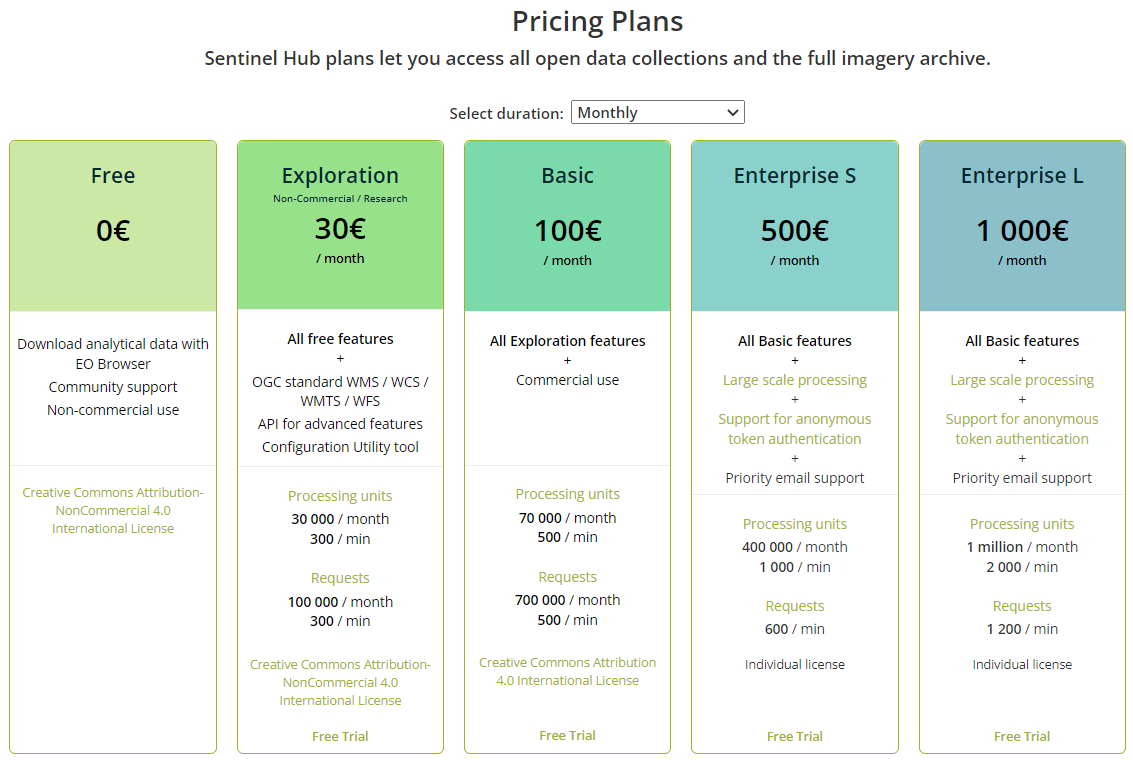Our firm is considering shifting to Sentinel Hub Process API from Copernicus SentinelSAT API, however for budget estimations we are not able figure out how many processing units would one request consume. Our main use case is fetching the NDVI, EVI & NDMI tiff as well as stats (mean, max, min and graph) for a farm shapefile. We currently have around 200 plots. This will also decide whether we make an API call every time we need to get this data or whether we save this on our own server for future use.
What is the difference between a processing unit and request ? I see for enterprise plans the number of requests are less than processing units
Enter your E-mail address. We'll send you an e-mail with instructions to reset your password.



